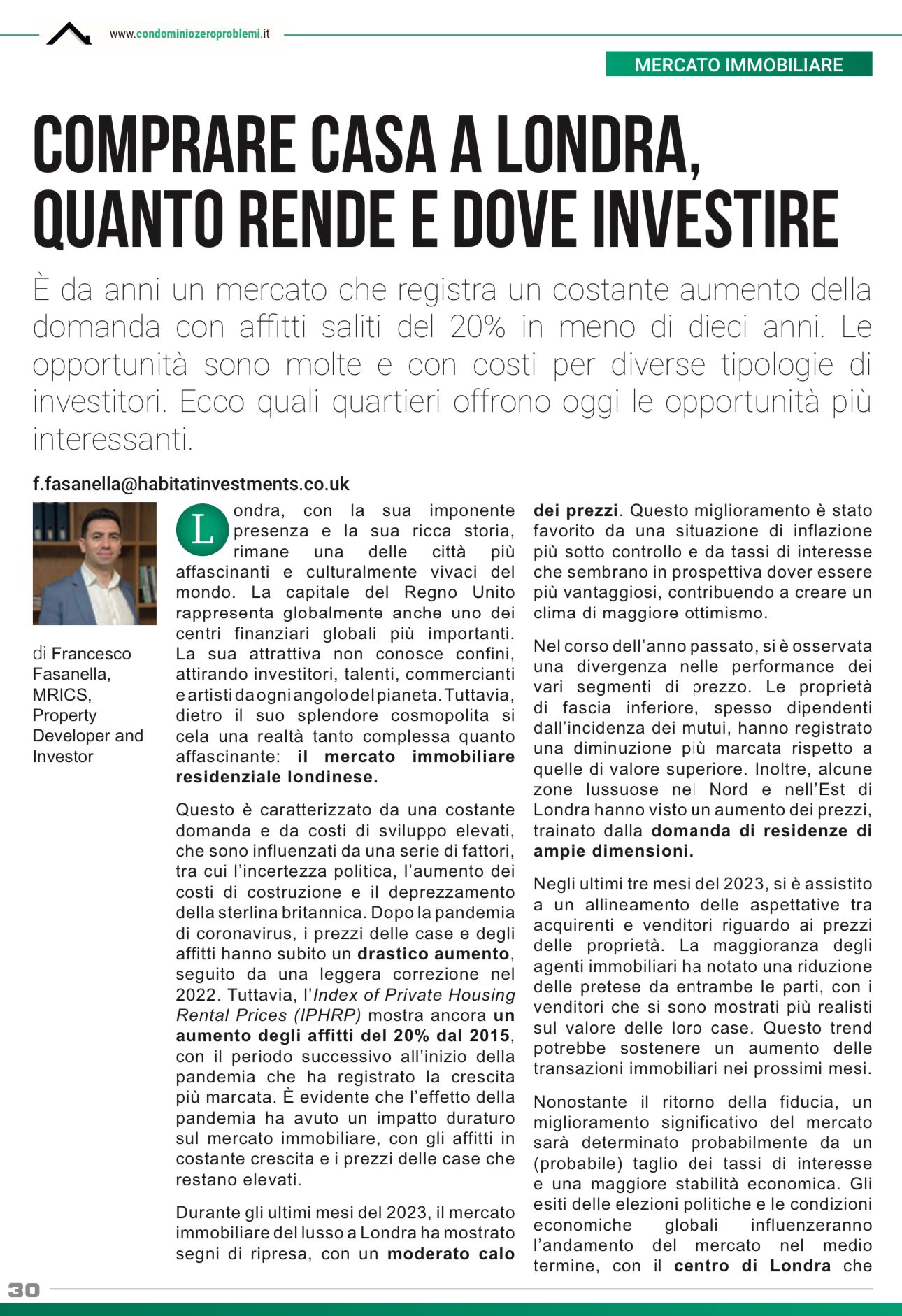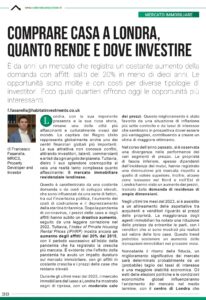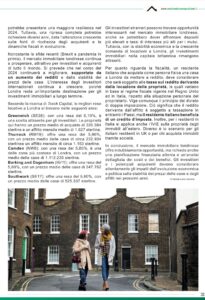
12 Feb Buying Property in London: Potential Returns and Investment Opportunities
For years, the market has seen a consistent rise in demand with rents increasing by 20% in less than a decade. There are numerous opportunities available, with costs accommodating a range of investor types. Here are the districts that currently offer the most interesting opportunities.
By Francesco Fasanella MRICS, Property Developer and Investor (for “Condominio Zero Problemi”)

London, with its imposing presence and rich history, remains one of the most enchanting and culturally vibrant cities in the world. The capital of the United Kingdom is also globally recognised as one of the most important financial centres. Its allure knows no bounds, attracting investors, talent, traders, and artists from every corner of the globe. However, behind its cosmopolitan glamour lies a reality as complex as it is intriguing: the London residential property market.
This market is characterised by constant demand and high development costs, influenced by a range of factors including political uncertainty, rising construction costs, and the depreciation of the British pound. Following the coronavirus pandemic, housing prices and rents experienced a dramatic increase, followed by a slight correction in 2022. Yet, the Index of Private Housing Rental Prices (IPHRP) still shows a 20% increase in rents since 2015, with the period following the onset of the pandemic recording the most significant growth. Clearly, the pandemic’s effects have had a lasting impact on the property market, with rents continuously rising and house prices remaining high.
In the latter months of 2023, the luxury property market in London showed signs of recovery, with a moderate price decrease. This improvement was supported by better-controlled inflation and interest rates that are expected to be more favourable, contributing to a more optimistic atmosphere.
Over the past year, there has been a divergence in the performance of different price segments. Lower-end properties, often dependent on mortgage prevalence, saw a more marked decrease compared to higher-value properties. Furthermore, some upscale areas in North and East London have seen price increases, driven by the demand for large residences.
In the last three months of 2023, there was an alignment of expectations between buyers and sellers regarding property prices. The majority of real estate agents noted a reduction in demands from both sides, with sellers becoming more realistic about the value of their homes. This trend could support an increase in property transactions in the coming months.
Despite the return of confidence, a significant market improvement will likely be driven by a (probable) cut in interest rates and greater economic stability. The outcomes of political elections and global economic conditions will influence market trends in the medium term, with central London possibly showing greater resilience in 2024. However, a full recovery may take several years, given the increasing focus on buyers’ sources of wealth and evolving tax dynamics.
Despite recent challenges (primarily Brexit and the pandemic), the London property market continues to thrive, attractive to investors and buyers worldwide. It is anticipated that during 2024, the market will continue to improve, supported by rising incomes and stable house prices. The interest of international investors continues to grow, as London remains a significant destination for long-term property investments.
According to research by Track Capital, the best rental yields in London are found in the following areas:
- Greenwich (SE28): with a yield of 6.10%, it is an attractive choice for investors. Properties here have an average purchase price of £320,584 and an average monthly rent of £1,627.
- Thurrock (RM19): offers a yield of 5.90%, with an average house price of approximately £232,934 and a monthly rent of about £1,153.
- Camden (NW8): with a yield of 5.80%, is one of the most expensive areas in London, with an average house price of £1,112,235.
- Barking and Dagenham (IG11): offers a yield of 5.60%, with an average house price of £347,762.
- Southwark (SE17): offers a yield of 5.60%, with an average house price of £525,337.
Foreign investors can find appealing opportunities in the London property market, although they may face higher deposits and interest rates on mortgages. Nevertheless, with economic stability and the growing demand for rentals in London, property investments in the British capital remain attractive.
In conclusion, the London property market undoubtedly offers opportunities, but also requires careful financial planning and a detailed analysis of costs and benefits. Investors and potential buyers must carefully consider the impacts of economic and political evolution on the stability of house prices and rents in the coming years.

